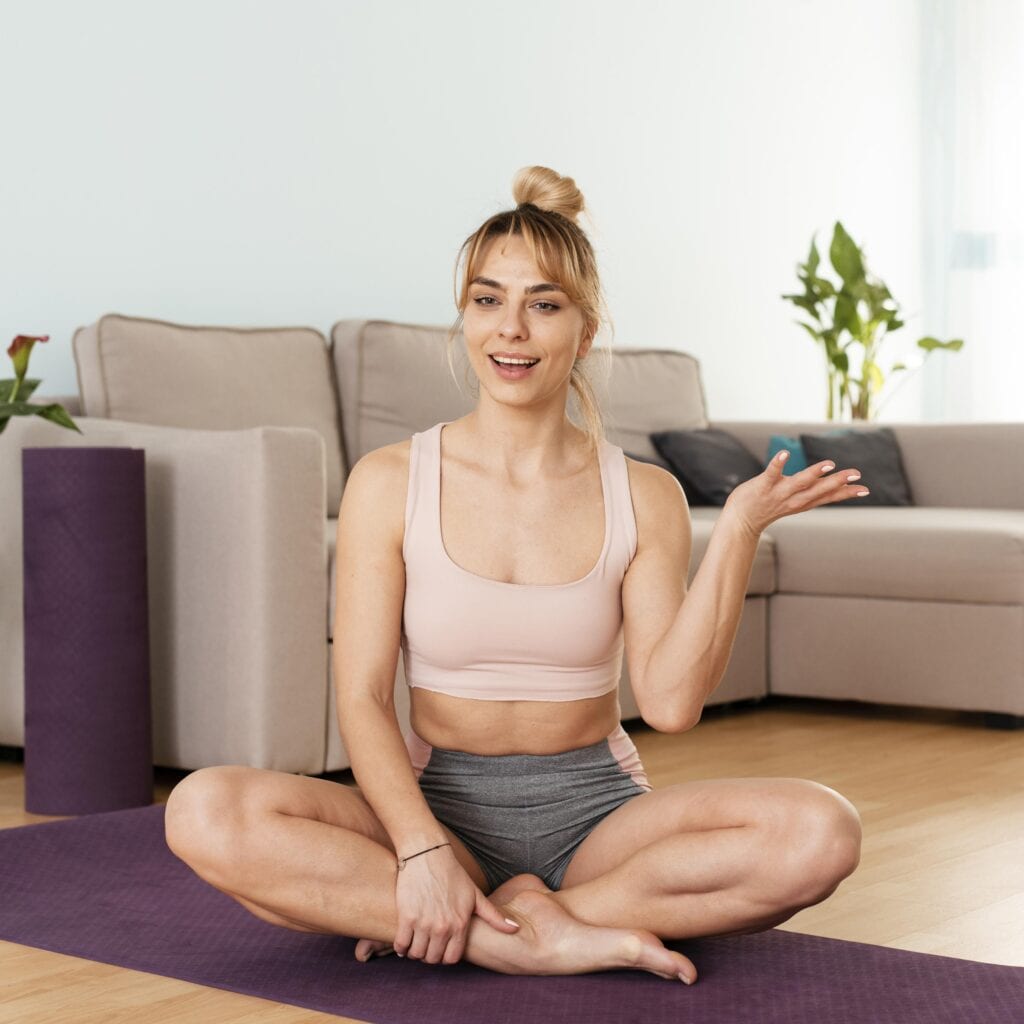What is a Pilates Instructor
The question I often hear from people I meet is “How do you become a Pilates Instructor?” I usually share my story in how I discovered, fell in love with, and then dove headfirst into a Pilates teacher training program. Or, I share my book and course on becoming a Pilates instructor.
There is more info out there now on this journey than when I was beginning my path. There is so much info out there now that it can be difficult to navigate what is right or the best for you. This blog aims to share some ways to become a Pilates Instructor, and I’ve asked some instructors from all over the world to share their advice on becoming a Pilates Instructor.
What is a Pilates Instructor: someone trained to teach the Pilates method. They went through training that requires observation, practice teaching, and self-practice/sessions to understand and integrate the method in their bodies and their client’s bodies. Pilates instructors are trained to teach on the Mat, Reformer, Cadillac, Wunda Chair, High Chair, and some even more. My training included Ped-o-Pull, Arm Chair, Barrels, foot corrector, toe corrector, and more. Joseph Pilates designed the Mat first and then realized people needed more support to help them do it. The Reformer and other apparatus were born. You can teach just the mat but having full training on all the equipment allows you to teach a variety of clients, book clients back to back and truly help your clients “Return to Life.”

How Do You Choose a Program
How do you choose a program: I would start with the PMA (Pilates Method Alliance) registry of schools first. Ask your Pilates instructor where they were trained. If you like how they teach, then that could be a great indicator you’ll enjoy learning in that studio environment. Take a session and class from the teacher trainer before signing up. If the Pilates feels resonates with you greatly! If it doesn’t then continue to search.
What questions should you ask the potential program? Check out my book and free course for a list of questions to ask the programs you are researching. I cannot stress enough how serious you should treat this school search. While becoming a Pilates instructor may take less than a year it’s as important as choosing a college or university. You want to set yourself up with a strong foundation because while training is less than a year your eyes, skills, and instincts take years to develop. The better your foundation, the stronger you start out.
What do Programs look like: I asked a few training schools to share their programs with me to give you an idea of what the journey can entail.
My friend Miguel Silva of Uno Pilates in Spain shared “I decided to become a Pilates teacher due to my back pain and my tight muscles. When I first tried Pilates, I was literally in love with this method, and I saw what “Contrology” could do for me. So now what I wish is to pass the word to as many people as I can! It works and I’m a living proof of that!
The Pilates Center: offers three different programs for new teachers- Intermediate 450 hours, Intermediate Plus 600 hours, and Advanced 950 hours. Beginning in 2017, all will be offered as 12-month programs. They are a combination of completing mentoring in a studio environment and using an online management system we call iTPC. iTPC helps to organize the students during their program. Here students will take all written exams, answer assignments based off of completion requirements they complete in their studio environment, along with viewing the online Formal Lecture Series taught by Amy Taylor Alpers and Rachel Taylor Segel. We do offer the Formal Lecture Series live in Boulder once a year, we encourage all students to attend to see them live. Using both the studio mentoring and iTPC enhances a student’s ability to learn the Pilates method. For more info contact Kelli.
Kara Wiley believes an eight-month foundation program is a good amount of time. She is a teacher trainer for Real Pilates. ” I think that it is both enough time to introduce the basics of how the equipment is used in the system, how some exercises can be done on various pieces of equipment and how they relate to each other, how to teach and spot and some additional nuance in training the eye of the instructor. After the program and successful “testing out,” I would say that I also agree with Jay Grimes that it really takes five years to train a teacher. Those first eight months of discovery then need to be further nurtured with applying it to many bodies, many issues of those bodies and further exploration of the exercises on your own body.”
The Real Pilates Classical Teacher Training Program: “is a comprehensive 30-week program. Presented over 600 hours total, this one-of-a-kind program is designed to develop your ability to be a teacher, coach, and guide for Pilates students. Our approach will set you up for success as a professional Pilates instructor.”
Students have weekend training, studio practice, homework, observation, sessions, and assistant teaching. It’s so important that you have time to teach in front of your mentors. They can help guide you to effective
teaching. Not just saying the words but demanding what you are asking.
I love the way my friend Emanuela of Rome put it: “there is a big difference between to become a Pilates instructor and to be a Pilates instructor. In the first case, you can study in One year the classical Pilates, but you know only the exercises. In the second case, you can be an instructor if you think that it’s a personal route, It has an indefinable time. Every day you live to learn from your body the Pilates method. It’s a lifestyle and also you can be a teacher when you observed and studied with the other teacher. Open your body and mind by different sensations or information.”
I honestly could go on and on about what it takes to become a Pilates instructor. When I dove into a program I was lucky to find a good one to offer the foundation I needed. Now, 10 years in I am still learning. I will always be learning. I freaking love that about Pilates teaching.
To get more assistance choosing a program order my book, take my course, check out the PMA site, and take Pilates, lots of Pilates from teachers you love and admire.
xx~LL






Thanks for sharing this informative post, it has helped my alot in deciding to do a Pilates Teacher Training. Its brief description helped me understand what to look for in a program and why, how to select good program. I am planning to take program by the end of this year.
Hi Steven, that is amazing news! I can’t wait to hear how your training goes! Let me know if you need any assistance or have any other questions. xx~LL
For those of you interested in becoming Pilates Teachers:
Update on the PMA site regarding the School Registry; it no longer exists.
However, there is now a School Approval Program on the PMA site that serves potential Pilates students much better, The Pilates School Approval Program (PSA) is a Program that has been created by the Pilates Method Alliance that recognizes schools that have gone through a rigorous process to show their compliance with Educational Standards.
https://www.pilatesschoolapprovalprogram.com/for-students-1
Hi Peter, thank you for sharing this link with our readers. The PSAP is growing and is a great step in raising the bar of trainings. Also, 48 states require programs to be registered! It’s great xx~LL